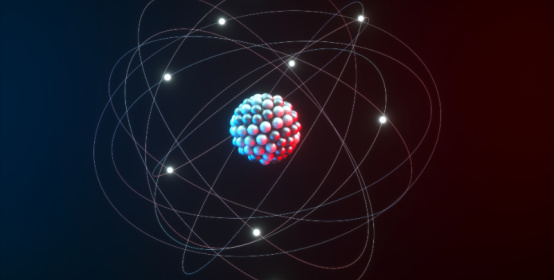
Nuclear fusion isn't a new idea. It's the reaction that powers the sun, but this makes it sound deceptively simple. In reality, triggering a fusion reaction that doesn't consume more power than it generates has been a long-held goal for scientists. Recently, researchers at the National Ignition Facility in California finally succeeded in doing so.
Nuclear fusion is a process of combining smaller atoms into a single, larger atom. Think of it like mashing two or more atoms together into a completely new element. This happens naturally in the core of the sun, and releases incredible amounts of energy. It's efficient, virtually waste free, and uses already-abundant hydrogen atoms.
This makes it very different from nuclear fission, which is what we use to power nuclear power plants. This is the process of splitting atoms, not putting them together. It releases a lot of energy but creates nuclear waste as it does so. This waste needs to be managed, and experts still don't have a perfect way of doing so.
Fusion was discovered roughly a hundred years ago, and it's hardly an unattainable goal for scientists. The real kicker was actually turning it into a means of generating energy—up until very recently, kickstarting the reaction always involved putting more energy into it than it released. This meant that it wasn't a viable means of generating energy in itself, since you'd always end up with less energy than you had when you started.
On December 5th, the National Ignition Facility finally managed to trigger a nuclear fusion reaction that released more energy than it required. They did this using a process called “thermonuclear inertial fusion.”
This process starts with a cylinder containing a tiny, roughly BB-sized capsule containing two hydrogen isotopes. Scientists fired an array of 192 lasers into this cylinder, which caused X-rays to bounce off of the far wall and strike the capsule. This squeezed the capsule, forcing the isotopes inside to begin to fuse.
It's usually a process that needs more energy than it releases, but this breakthrough involved making one very minor change: The shell of this capsule was a little bit thicker than it was in the past. This let the capsule hold its shape better than before. As a result, the fusion fuel remained hot, dense, and in the right shape long enough to actually ignite.
The experiment took about 2 joules of energy to start and released about 3. This doesn't sound like much, and it isn't. This thermonuclear inertial fusion reaction isn't going to be revolutionizing the way we generate electricity just yet. The most important thing to remember here is that, up until now, causing a reaction that released more energy than it took was virtually impossible.
Now, researchers can work on attempting to scale this reaction. If they're able to do so, it could change the world. Nuclear fusion uses the most abundant element in the world—hydrogen—and doesn't release harmful pollution. If this reaction is made commercially viable, it could be a source of unlimited clean energy.
The lasers used to initiate this reaction are old. In technology terms, very old. They're based on technology from forty years ago, which means that they're not terribly powerful or energy efficient. Modern lasers are much better at both of these things, which means they could feasibly trigger the same reaction with fewer lasers and less energy input.
The next step in scaling thermonuclear inertial fusion will involve considerable investment in the public and private sectors. Remember, a fusion reaction that produces a net gain of energy was the stuff of science fiction just a few months ago. Now that this experiment has proven that it can be done, a whole new world is open to us.
Following the National Ignition Facility's model, public and private entities can begin refining the process—changing the capsule, using more powerful lasers, and so on. This could very well result in the first usable fusion reactor within our lifetimes.
Sources of clean, unlimited energy have been a cornerstone of speculative fiction for ages. With this breakthrough, they may just become a reality.